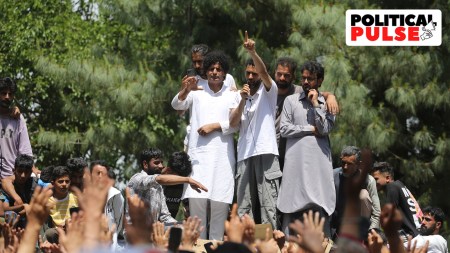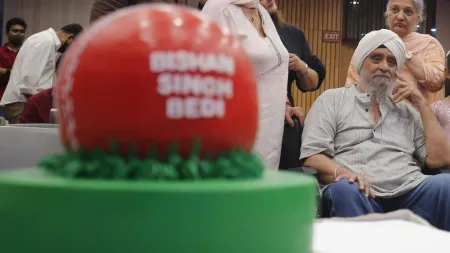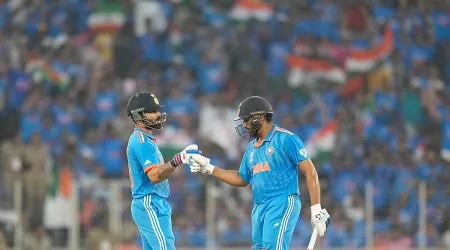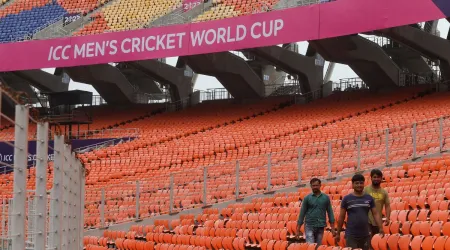- India
- International
After two deaths in a week, boxing considers some changes in rules
Maxim Dadashev, a 28-year-old Russian, died July 23, four days after a light welterweight fight in Maryland. Hugo Alfredo Santillán, a 23-year-old Argentine, died July 25, five days after collapsing at the end of a lightweight fight in Buenos Aires.
 Argentine boxer Hugo Santillan is placed on an ambulance after he collapsed at the end of a WBC title fight against Uruguay’s Eduardo Abreu in San Nicolas, Argentina. (AP Photo/Jorge Feres)
Argentine boxer Hugo Santillan is placed on an ambulance after he collapsed at the end of a WBC title fight against Uruguay’s Eduardo Abreu in San Nicolas, Argentina. (AP Photo/Jorge Feres)
By Scott Cacciola
Pat English, a lawyer with long and influential ties to boxing, was delivering a history lesson on various federal guidelines for the sport when he flashed a black-and-white photograph of a young fighter.
The boxer’s name was Stephan Johnson, a junior middleweight who had fought three times (and most likely sustained at least one brain injury) in the seven months leading up to his U.S. Boxing Association title fight against Paul Vaden in November 1999. Johnson was under a medical suspension that was not recognized by some local boxing commissions, and despite his trainer’s objections, he was eager to return to the ring so he could earn enough money to move his mother out of public housing.
Johnson lost the fight, and his life. Knocked out in the 10th round, he was rushed to a hospital where surgeons drilled two holes in his skull. He died two weeks later at 31.
English, who was at that fight, recalled some of those details last week as he spoke at a meeting of the people who regulate the dangerous sport and are grappling with fresh tragedies that felt too familiar.

Two boxers died days apart last month after sustaining brain injuries in the ring. Maxim Dadashev, a 28-year-old Russian, died July 23, four days after a light welterweight fight in Maryland. Hugo Alfredo Santillán, a 23-year-old Argentine, died July 25, five days after collapsing at the end of a lightweight fight in Buenos Aires. Santillán had fought to a draw.
 In this 2018 photo, Maxim Dadashev, of Russia, left, hits Antonio DeMarco, of Mexico, during a junior welterweight bout in Las Vegas. (Source: AP)
In this 2018 photo, Maxim Dadashev, of Russia, left, hits Antonio DeMarco, of Mexico, during a junior welterweight bout in Las Vegas. (Source: AP)
Their deaths framed conversations at the annual meeting of the Association of Boxing Commissions, where directors of state and tribal commissions examined policies central to boxing and other combat sports they supervise at a local level. They touched on drug testing, concussion protocols and even social media decorum for referees. (The primary message there: Don’t tweet dumb stuff.) But the discussions kept returning to a basic idea: Boxing is inherently dangerous, and fighters depend on the rules to prevent the worst possible injuries.
“Sometimes I wonder why I’m doing this for a living,” Mike Mazzulli, the departing president of the ABC, said in a telephone interview after the meeting in Scottsdale. “But if I’m not doing it, no one will.”
The regulators, and others in the sport, are still seeking answers.
“This is a time where we all need to go back to the drawing board and understand what is happening,” Mauricio Sulaiman, the president of the World Boxing Council, said in a speech at the meeting. “Because something is happening.”
Sulaiman, whose organization sanctioned Santillán’s deadly fight, continued: “Any boxer who goes to the ring is willing to do whatever he has to do to win — whatever he has to do to be successful and make money for his family. If you ask him to fight 20 rounds, he will do whatever it takes. They’re warriors. It’s our duty to protect them from themselves.”
That’s quite a demand for the people Sulaiman addressed. Boxing is not synonymous with health and safety.
“People are going to get hurt, and people are going to die,” Dr. Michael Schwartz, a co-chairman of the medical advisory committee for the ABC, said while speaking about the liability issues involved in practicing ringside medicine. “But we’re here to do everything we can to minimize those risks.”
One area where the sport can improve, regulators said, is oversight of how boxers cut weight before fights.
On the day Santillán died, former light heavyweight world champion Andre Ward, who last fought in 2017, said that it was crucial to do more monitoring of rapid weight loss just before bouts — and of the resulting dehydration.
“Lack of fluid around the brain increases the risk of a brain bleed,” Ward tweeted.
Because weigh-ins typically happen the day before the fight, boxers spend about 24 hours regaining as much weight as possible. But their bodies cannot absorb fluids again in such a short time, often leaving fighters dehydrated — a condition that can hurt vital organs and leave the brain less protected than usual.
The WBC introduced a pilot program this year that called for more weigh-ins in the days and weeks leading up to fights, plus one final weigh-in on the day of the fight itself to gauge just how many pounds each boxer was gaining at essentially the last minute.
Andy Foster, the executive officer of the California State Athletic Commission, has been charting the weight fluctuations of boxers in his state. His findings: Of 1,594 boxers studied in a three-year period through 2018, 306 had gained more than 10% of their body weight in the roughly 24 hours before their fights.
Foster shook his head when sharing that information and said he supposed that ignoring his findings would be easier than the alternative.
“But I don’t want it to be easier,” he said. “I now know this information, so we have to do something with it.”
Foster said he was going to start cancelling more fights. A weight gain of 15% or more? Fight is off. He said the California commission had asked him to draft language to that effect so that the members could bring it to a vote in October. Foster acknowledged that calling off a fight would be extremely difficult.
“You’re pushed against the wall by the promoter, and you’ve got 18,000 people sitting around looking at you,” he said. “But I don’t just think this stuff is dangerous — I know it.”
Schwartz emphasized the severity of the problem in boxing. Generally, he said, rapid weight loss below even 10% could be fatal.
“In the real world, we’re talking about potential death at 5 to 7%” because of dehydration, Schwartz said, contrasting that with fighters’ cutting 15% or more of their body weight.
Boxing has long struggled with the fact that many of its events are managed locally, leading to lapses in communication and differences in rules. The ABC has tried to curb some of those issues, in part by teaming up with BoxRec, a statistical database. Mazzulli said the number of boxers fighting while on suspension, as Johnson did in 1999, had declined drastically in recent years, to below 1%.
Near the end of the convention, Mazzulli wanted to revisit the death of Dadashev in Maryland. From his point of view, he said, it was hard to see what anyone had done wrong during the bout itself. Dadashev’s cornerman, Buddy McGirt, had gone so far as stepping in to stop the fight when it was clear to him that his fighter was taking too much punishment.
So what, Mazzulli asked, can the sport learn from these twin tragedies? Where would it go from here?
This video of Buddy McGirt urging Maxim Dadashev to stop fighting was hard to watch Friday, it’s even harder now. Heart-breaking. pic.twitter.com/BNjsdpJfle
— Ariel Helwani (@arielhelwani) July 23, 2019
Schwartz said being able to gather more information ahead of fights would be helpful.
“We don’t know what happened in the gym,” Schwartz said, speaking of boxers in general. “We don’t know how much weight he cut. We don’t know if he was concussed during training. This is probably the most difficult part of your job: How do we get that information? How do we get the fighters and corners and managers to be truthful?”








































